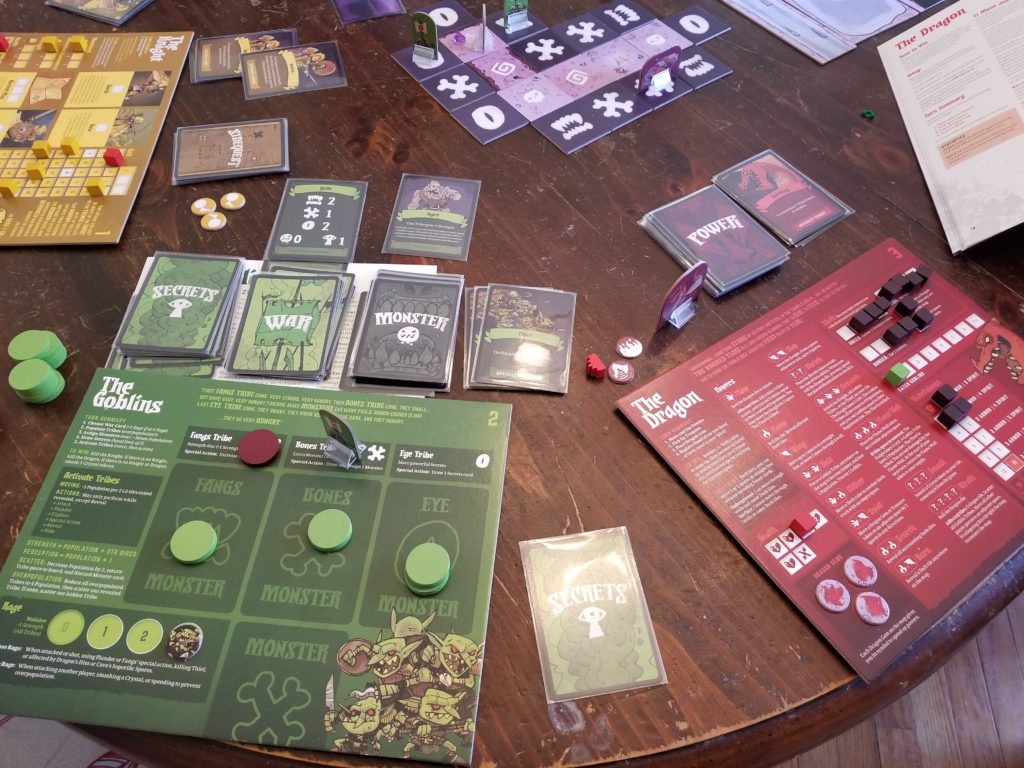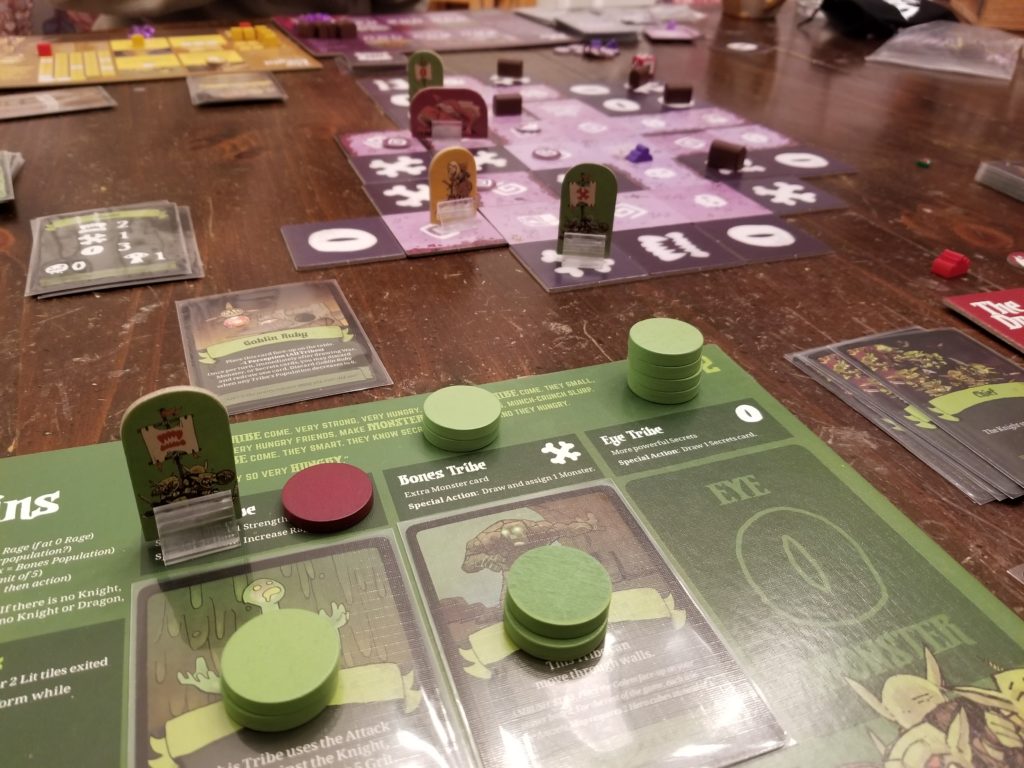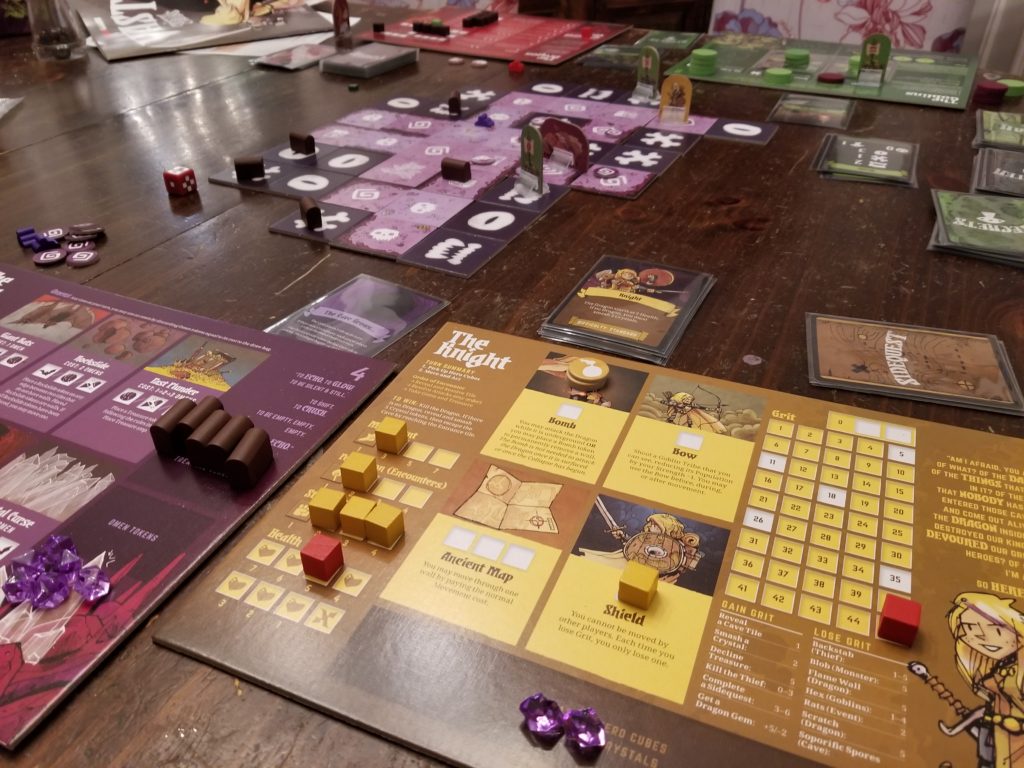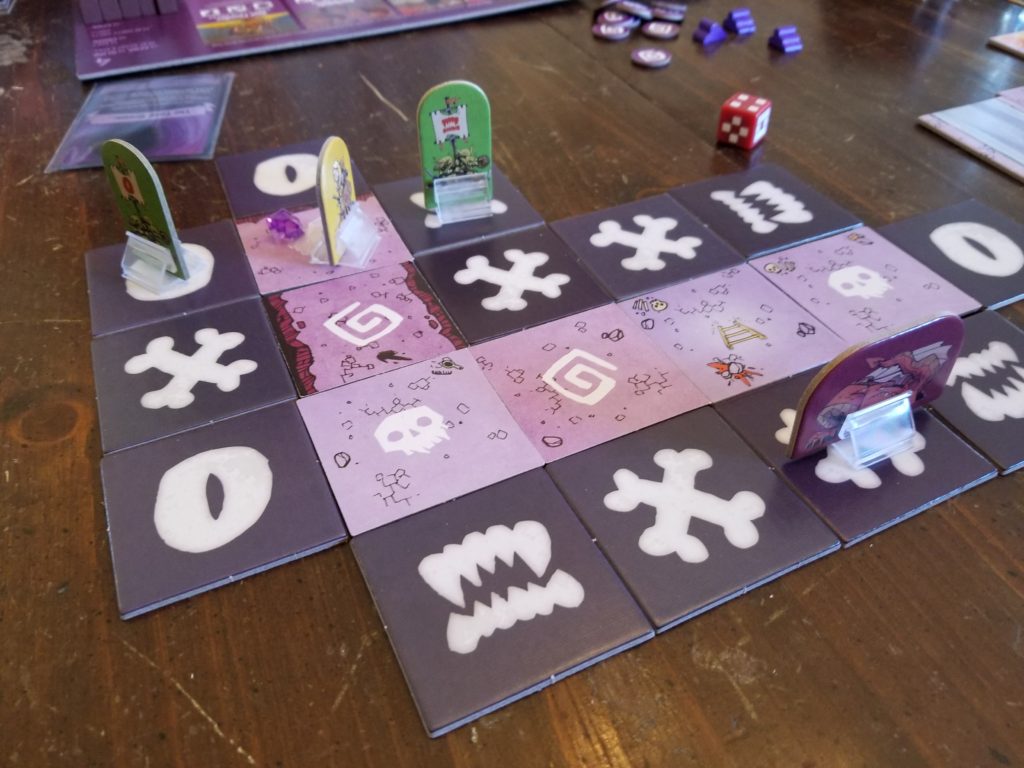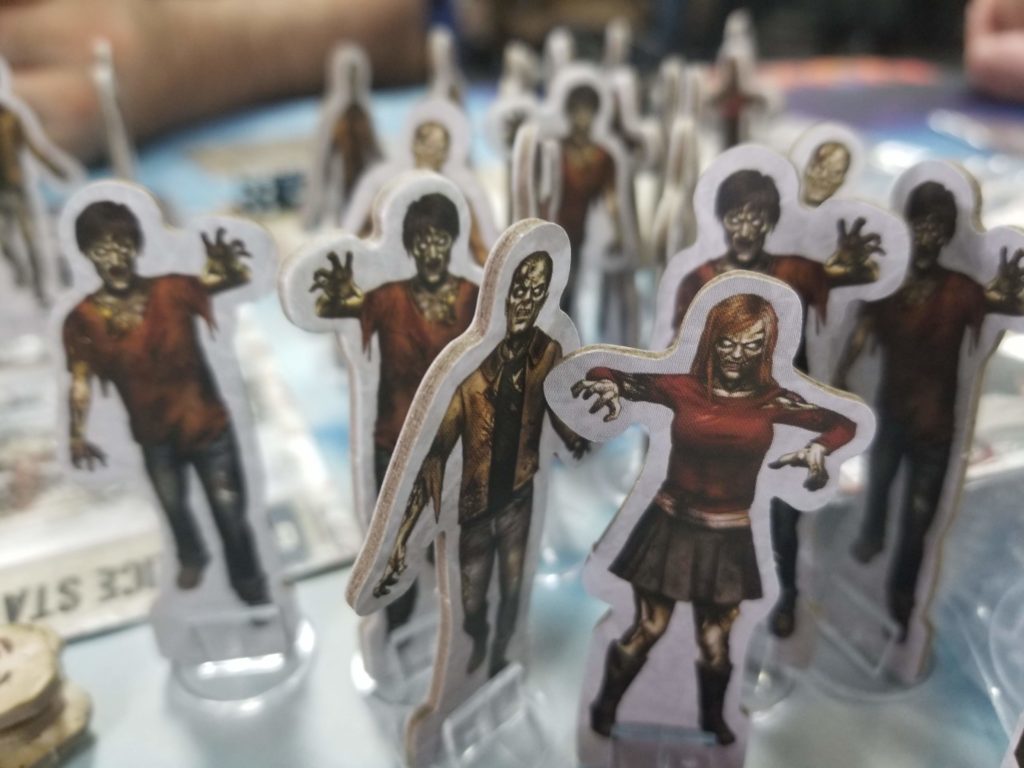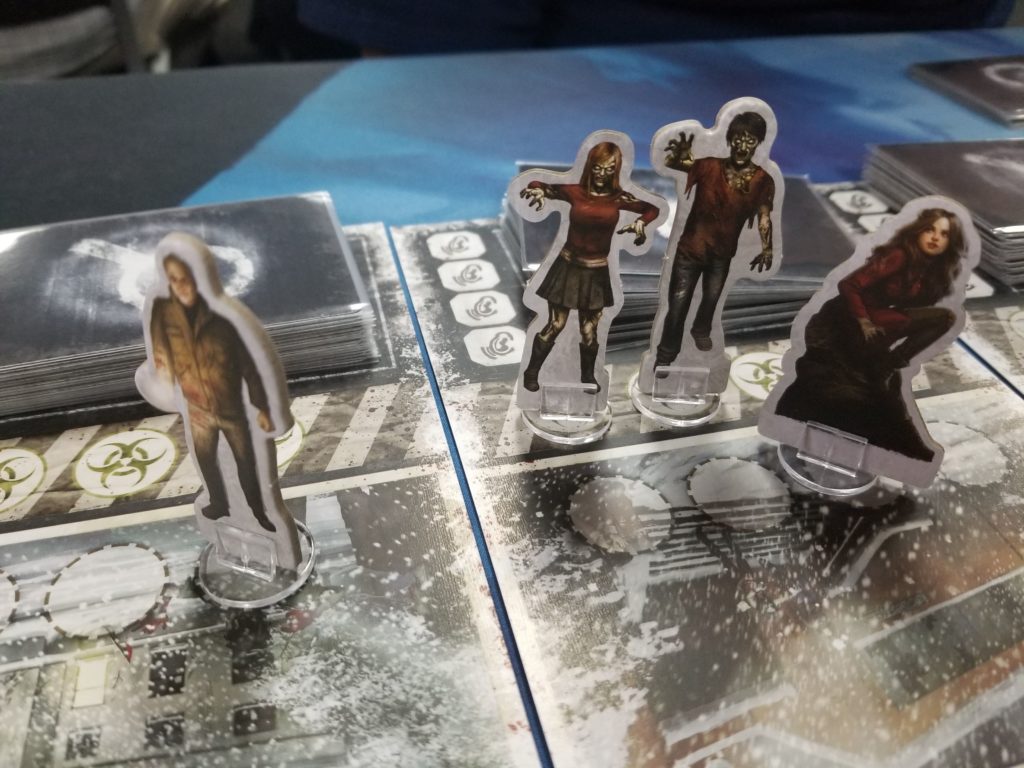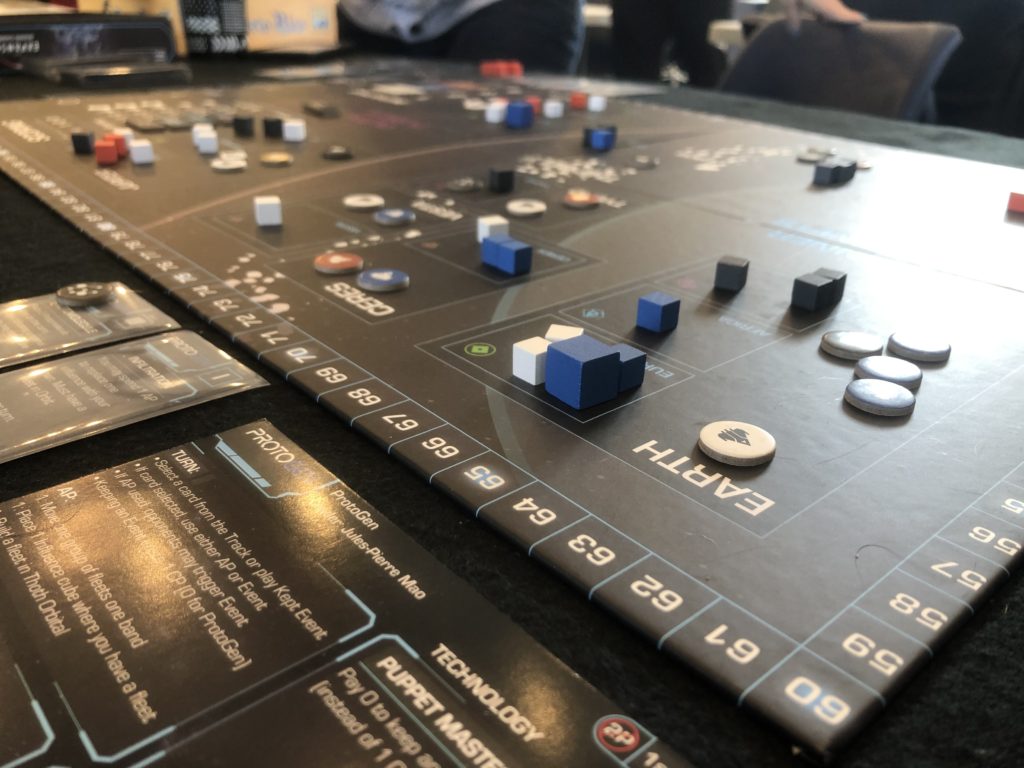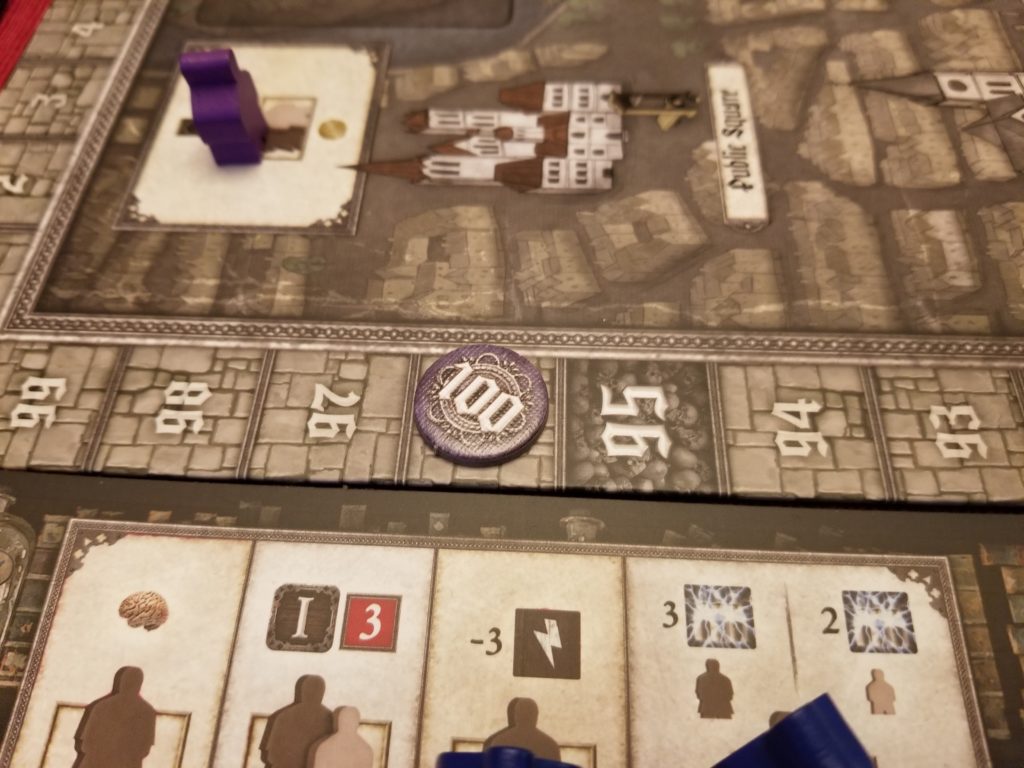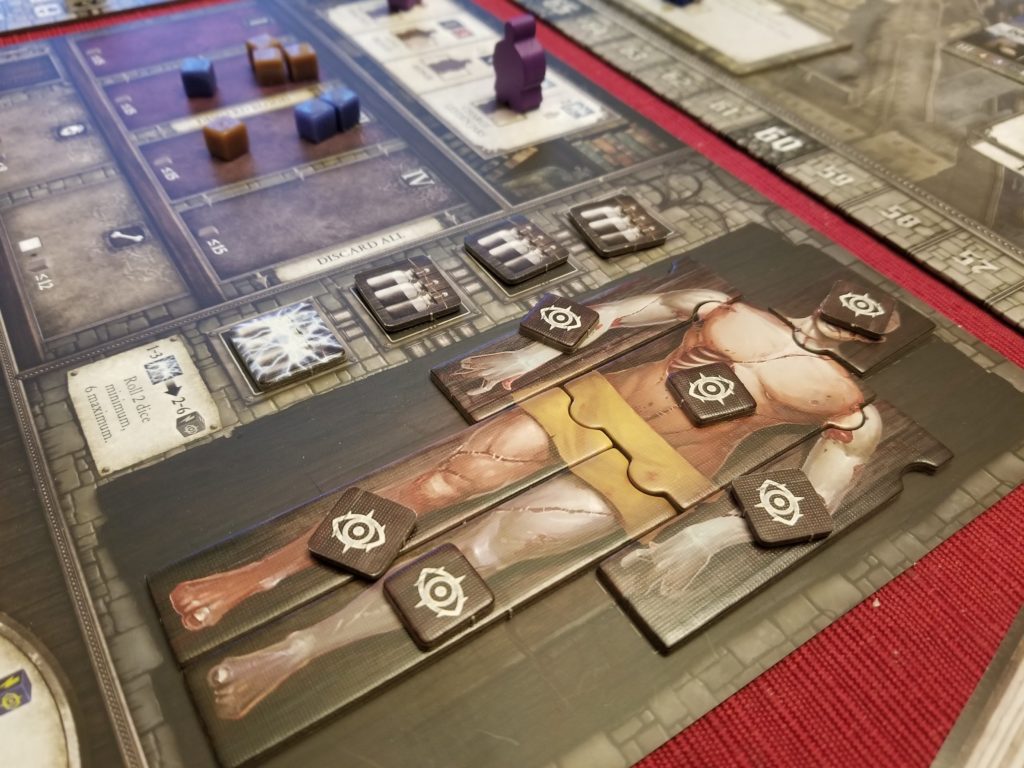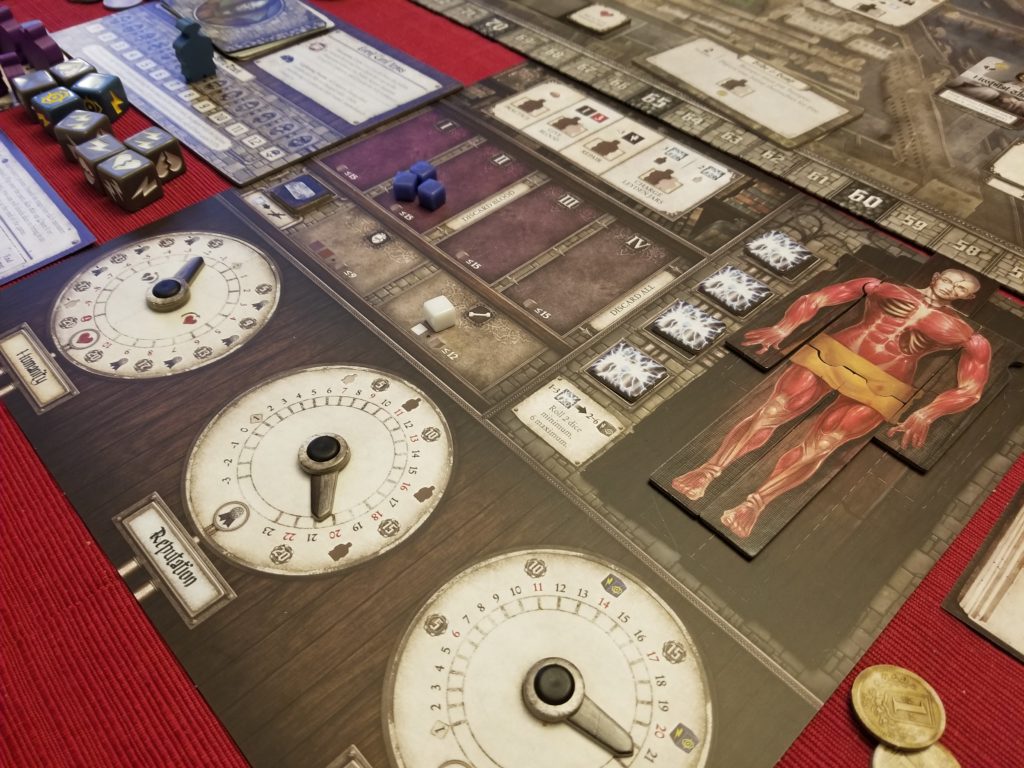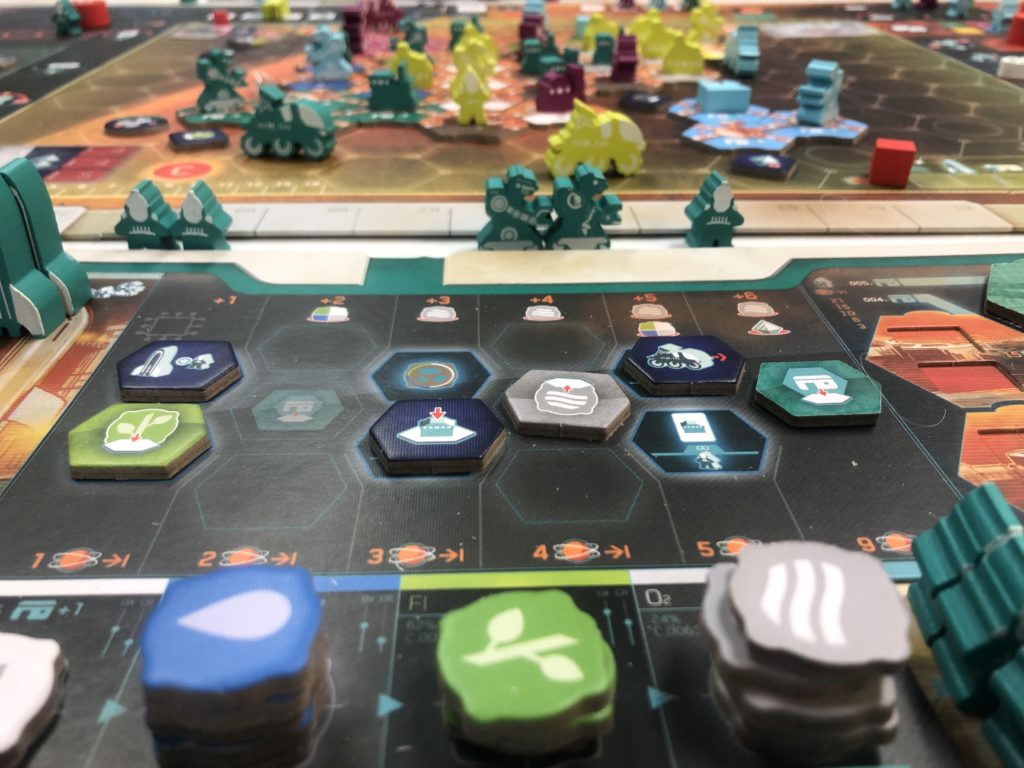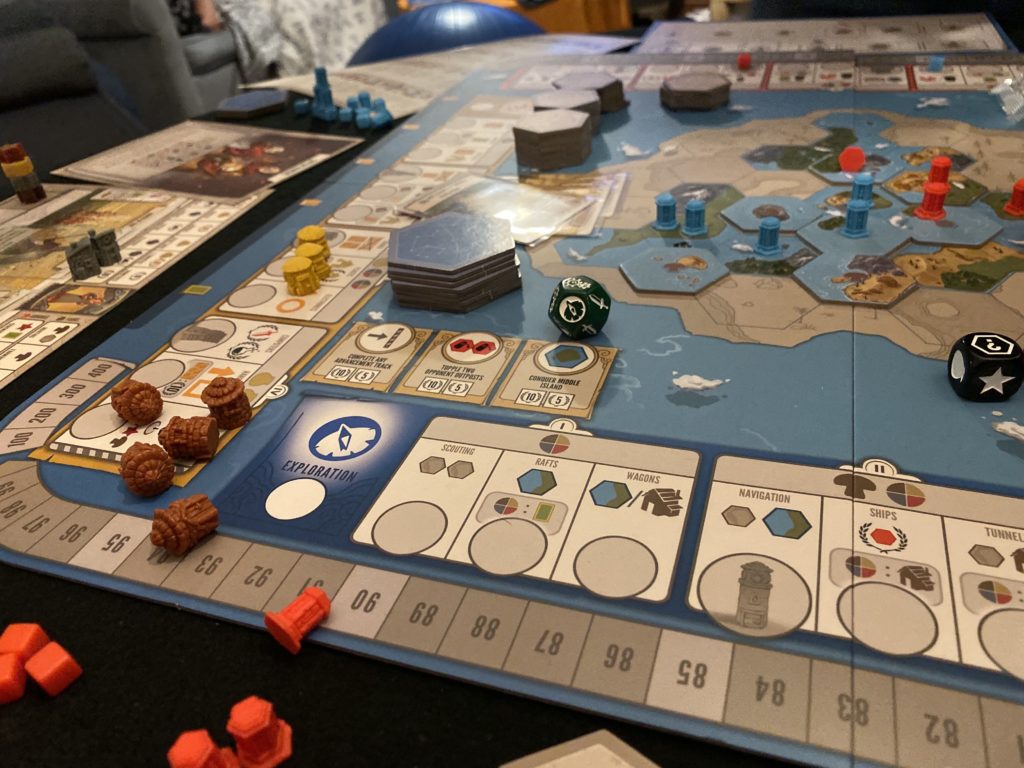[bgg id=231733]
Participants
- Mark
- Logan
- Bailey
Rules missed
- When the market is refreshed, put the tiles in reputation order. After season two, remove any 1 reputation tiles during refresh
Photos
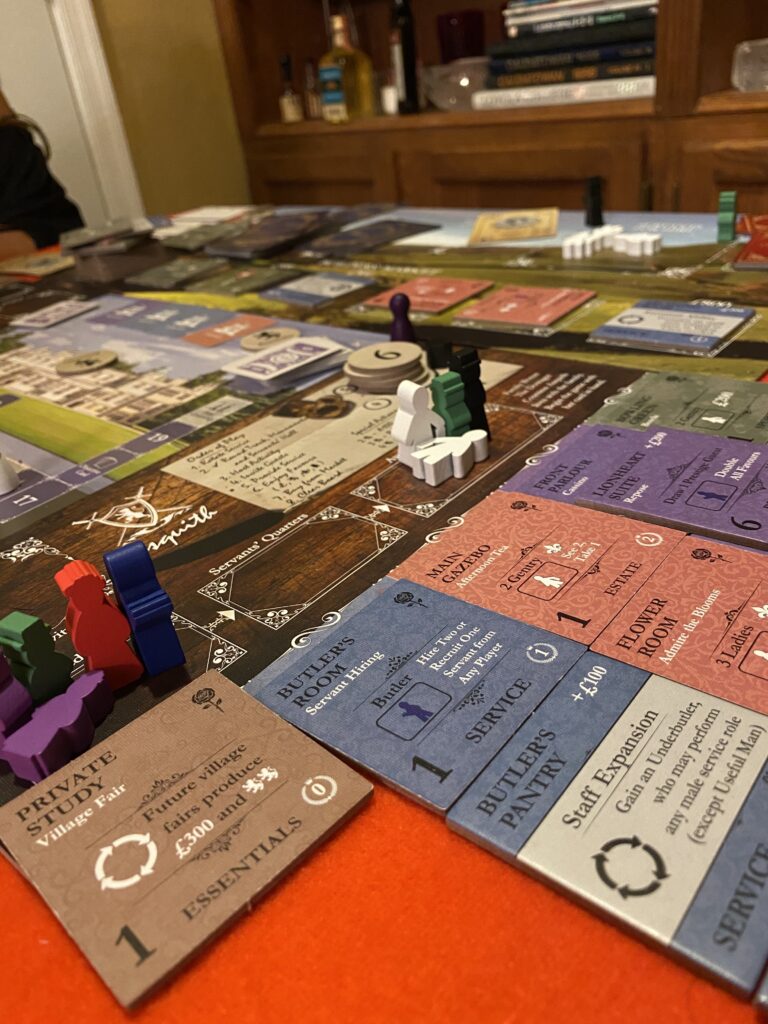
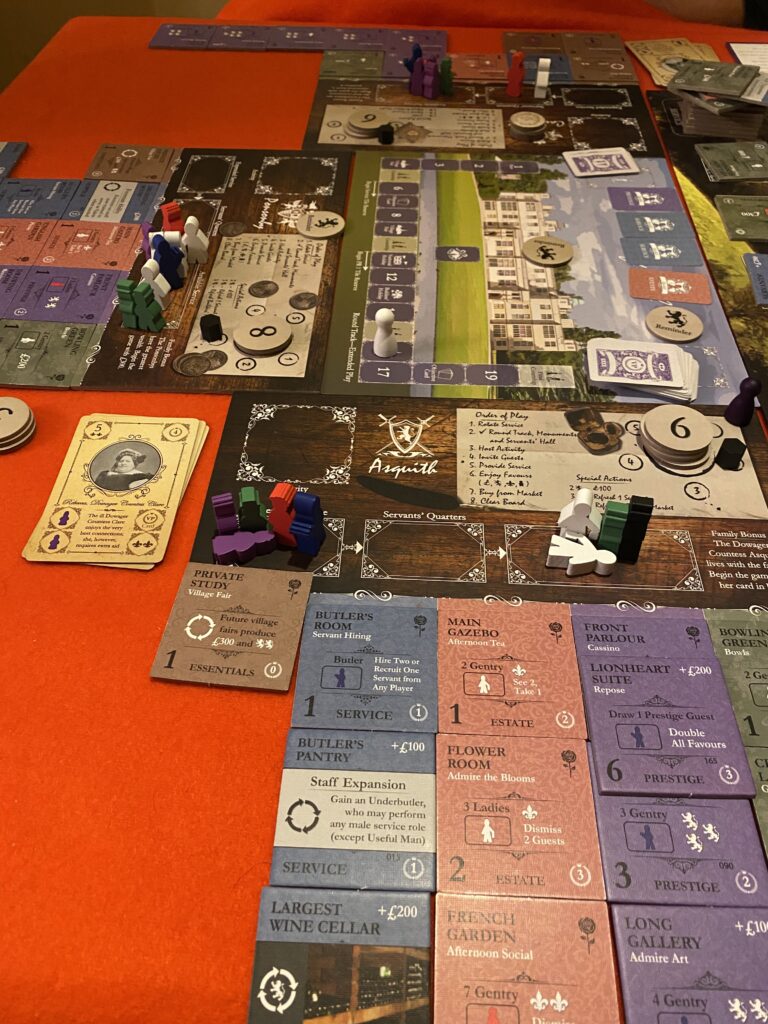
About the game
From Boardgamegeek:
You are the head of a respected but troubled family estate in mid-19th century Victorian England. After several lean decades, family fortunes are looking up! Your goal is to improve your estate so as to be in better standing with the truly influential families in Derbyshire.
Obsession is a game of 16 to 20 turns in which players build a deck of Victorian gentry (British social upper class), renovate their estate by acquiring building tiles from a centralized builders’ market, and manipulate an extensive service staff of butlers, housekeepers, underbutlers, maids, valets, and footmen utilizing a novel worker placement mechanic. Successfully hosting prestigious social activities such as Fox Hunts, Music Recitals, Billiards, Political Debates, and Grand Balls increases a player’s wealth, reputation, and connections among the elite.
Each turn, players choose a building tile representing a room or outdoor space in and around their 19th century British country house. The tile chosen dictates the event that can be hosted and the guests to be invited. Players must carefully plan, however, to have the proper staff available to service the event and support guests as needed. The reward for success is new investment opportunities, permitting further renovation of the estate (acquisition of more valuable/powerful building tiles), an increase in reputation in the county, an expanding circle of influential acquaintances, and a larger and highly-trained domestic staff.
Throughout the game, a competitive courtship for the hand of the most eligible young gentleman and lady in the county presents specific renovation and reputation objectives. The player who best meets these objectives while accumulating victory points will win the hand of the wealthy love interest and the game.”
Gameplay
A mix of luck and strategy will deliver victory in the final courtship, allowing you to capture your love interest, and likely the game.
Players each start with the same set of improvement tiles. They must then navigate their way through 4 seasons of courtship. Each season rewards the winner with extra VPs and an additional powerful card added to their hand. Each improvement tile and card in the player’s hand have a reputation level that must be reached to use them. So increasing reputation is an important part of the game and can earn lots of extra VPs.
Final Thoughts
We played the builders market refresh incorrectly, so some advantages of gaining very powerful improvements for cheap, would have mitigated by the higher cost of those improvements. The cards are very thematic with their flavor text which matches their characteristics with the benefits they provide. Anyone who enjoyed the series Downtown Abbey, will enjoy the theme of this game. Very much looking forward to playing it again.
